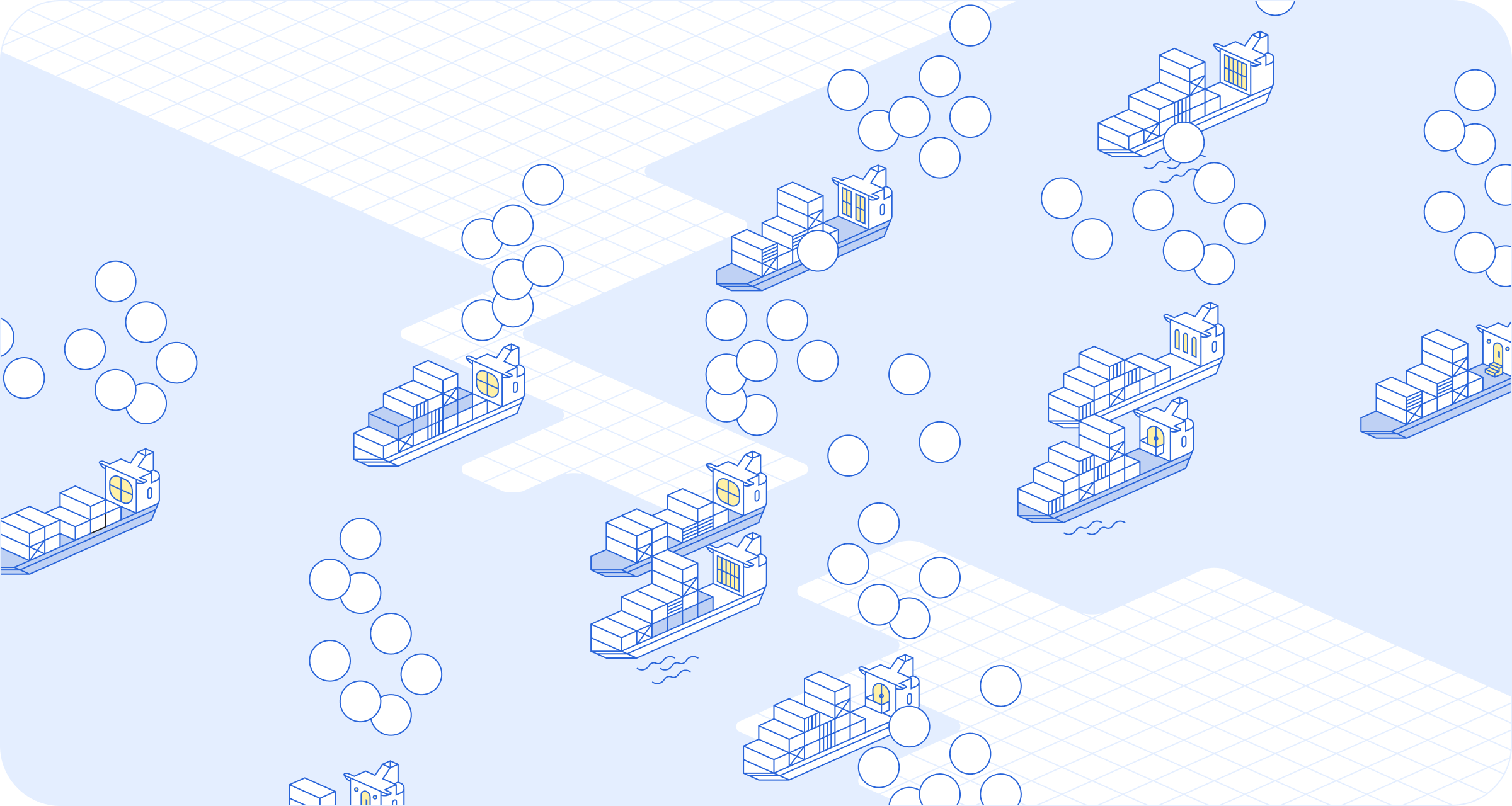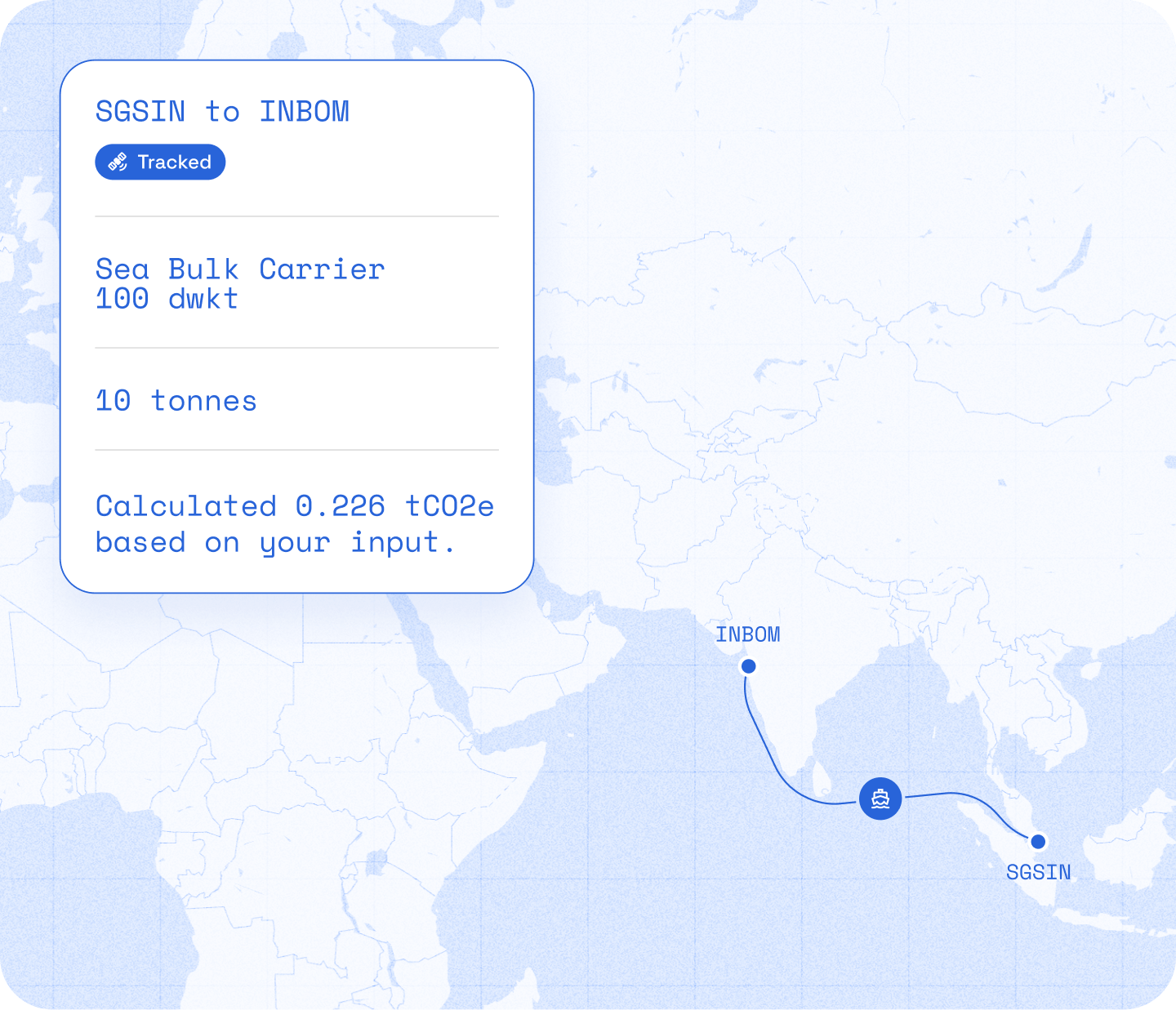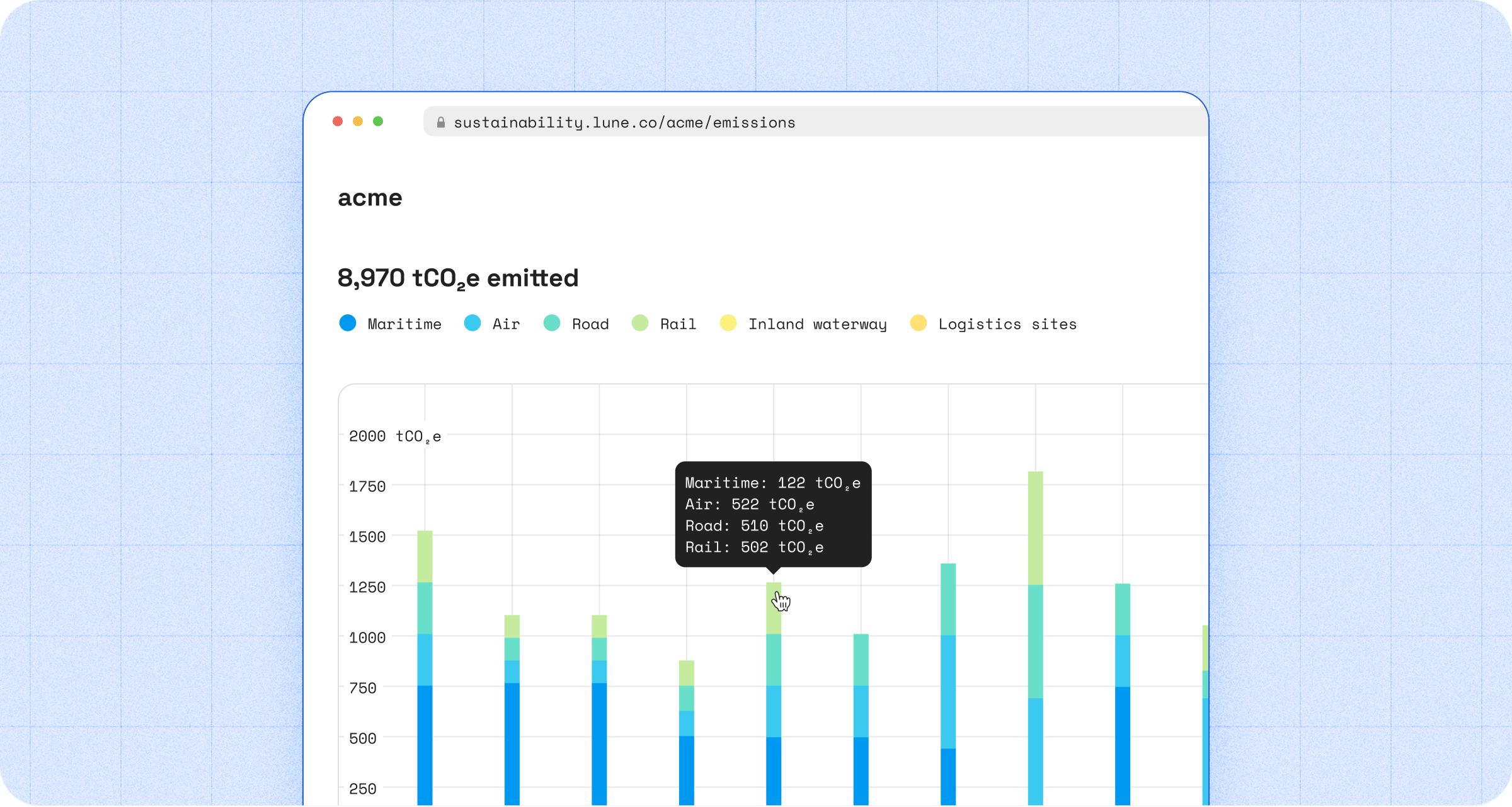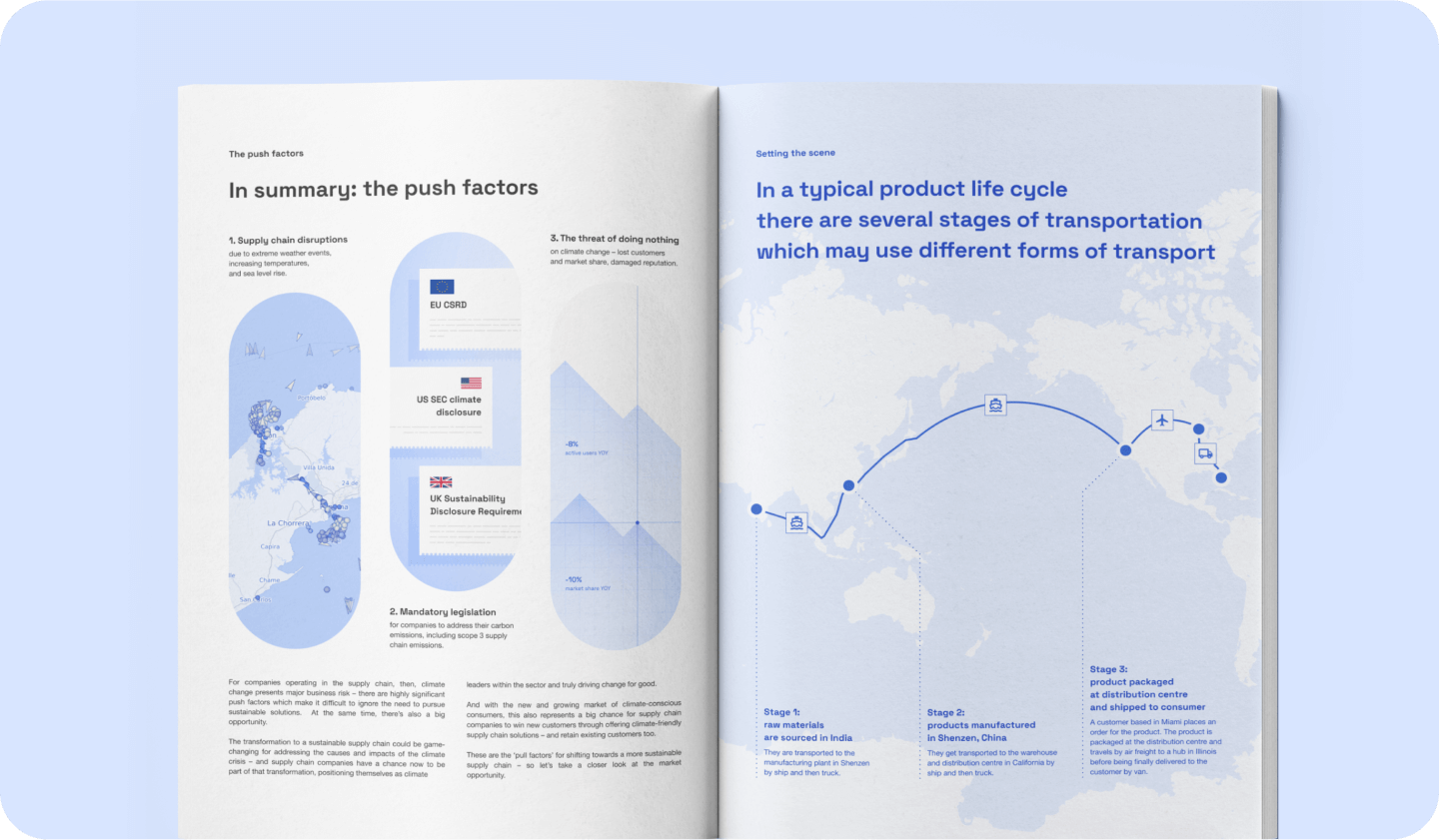

After a hectic start to 2024, we now have a deeper understanding of the main trends in supply chains and logistics. But here at Lune, we want to understand how these trends will influence the sector's ability to become climate positive.
Extreme weather events will cause havoc on supply chains
Climate change in regions like Panama underscores the vulnerability of global supply chains. This reality necessitates a strategic reassessment of stock management, purchasing strategies, and proactive anticipation measures to address the challenges of an unpredictable world. As our climate becomes increasingly volatile, supply chains and logistics will need to adapt to mounting physical climate risks.
As if we were back to covid times, now nearshoring (manufacturing or sourcing closer to your markets) can be expected to face a strategic swift to limit the dependency on supply chain disturbances. This can be influenced by factors like cost considerations, supply chain resilience, and environmental sustainability.
In addition to this, the effects of inflation, labour shortages, and oil volatility ripple through the industry, and will continue to significantly impact costs and increase risks. Be ready for the turbulence to continue as these economic challenges will still be critical aspects of supply chain management in 2024.
Together, these cascading risks will make the price of freight difficult to forecast.
 November 2015, Cyclone Megh is the second in a week to hit the coast of Yemen.
November 2015, Cyclone Megh is the second in a week to hit the coast of Yemen.Technology will be key to unlocking green supply chains
The leading role of technological improvements in the supply chain sector is unprecedented. The ongoing robotics revolution in warehousing is just one example of the seismic shifts caused by rapidly evolving technology in supply chains. To give another example, access to real-time data and visibility becomes critical to making informed decision-making in logistics (especially considering the Red Sea situation). Using technology to boost forecasting accuracy and overall supply chain resilience is already part of the day-to-day conversations.
Watch this space for an exciting update from Lune related to this topic later this month.
Subscribe for the latest insights into driving climate positivity

Diversified supply chains will mean more opportunities to win deals through green initiatives
Let me highlight that companies are also responding to unexpected supply chain discrepancies by diversifying supplier networks to enhance resilience. Shippers are exploring multiple sources to reduce dependency on a single supplier and challenge the status quo. Partnership is key but we can expect supplier diversification to be a continuous trend in the transportation sector.
More and more companies are expecting their suppliers to champion green practices, such as calculating their emissions. As companies expand their network, there will be ample opportunity for players to win new deals by showcasing sustainability.

Companies will search for the golden intersection between fast delivery and sustainability
A notable conversation in 2024 centres around the delicate balance between quicker deliveries and sustainable practices.
Companies are not just discussing sustainability; they are committing to net-zero emissions. The industry grapples with the challenge of balancing quicker deliveries with sustainable practices, seeking innovative solutions to meet consumer demands without compromising environmental responsibility.
Customers will pay for green shipping. Accompanied by rapid decarbonisation, companies can use insetting and offsetting to either counterbalance emissions or build a positive climate impact. However, only high quality insets and offsets can accelerate climate action and have a real impact.
With Lune, forward-thinking supply chain and logistic companies can embed climate action into their platform. Empowering their customers to fund climate projects that deliver measurable impact and peace of mind. It’s one example of how they can accelerate both deliveries and net zero.
Accelerating sustainability in 2024
Capitalising on these trends promises great rewards for logistics and supply chain companies. But one message is clear: sustainability is only going to grow in priority.
To learn more about greening the supply chain, download our free guide.

Readers also liked
Readers also liked

Subscribe for emissions intelligence insights
Get the latest updates in the world of carbon tracking, accounting, reporting, and offsetting direct to your inbox.


